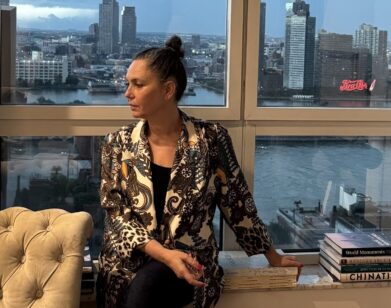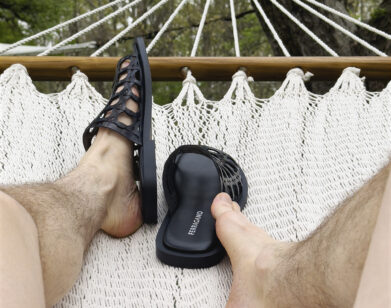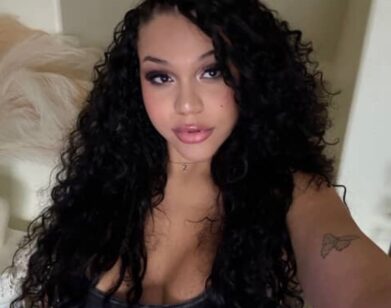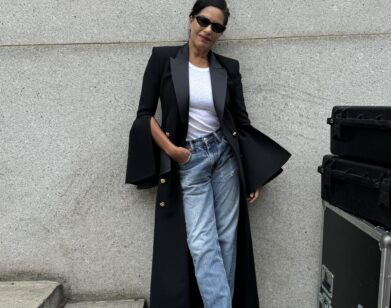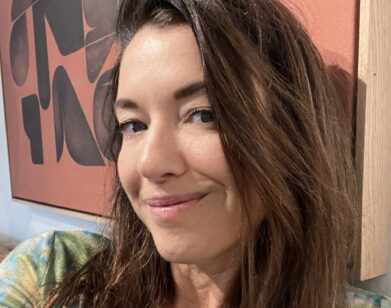True Director
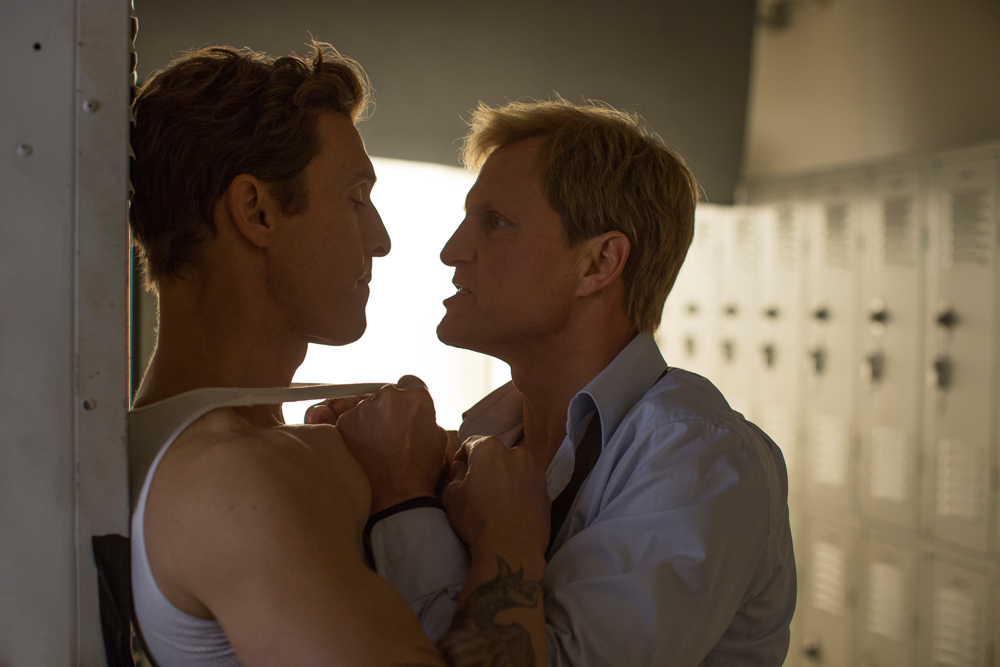
ABOVE: MATTHEW McCONAUGHEY (LEFT) AND WOODY HARRELSON IN HBO’S TRUE DETECTIVE. PHOTO COURTESY OF HBO.
“A smart guy who’s steady is hard to find,” detective Martin Hart warns in HBO’s new drama True Detective. An American Horror Story-style anthology, each season will follow different characters (and different actors) in various locations. Told in flashbacks against an eerie Louisiana countryside and forgotten trailer parks, the first season is a police procedural with a Southern Gothic tone. Woody Harrelson plays the seeming straightman Hart, with Matthew McConaughey as his loose-canon partner, Rust Cohle. Together, they discover the naked, battered body of a prostitute, hogtied to a tree and crowned with antlers. The crux of the story, however, is the relationship between Hart and Cohle over their 17-year hunt for the killer. “A great story should have an overall intoxication or attraction—not a cheap, red-herring hook at the end,” explains director Cary Fukunaga. “To me, the most exciting part was to get into that character-driven psychology,” he continues. “I didn’t grow up watching detective shows. I’ve never even seen an episode of CSI.”
If True Detective is the best new show on television, it is not without a cost. Fukunaga, McConaughey, Harrelson, and crew shot for 100 days on location. “We started off freezing cold, and we and ended up sweaty, hot, wet, and covered in insect bites,” recalls Fukunaga. “I’d never done a shoot for more than 40-something days,” he adds. “Jane Eyre was 44 days, and even that, you get to the end and you’re pretty tired.” In addition to the length of the shoot, the crew’s schedule was particularly grueling: while most television series will alternate between a team of three or four different directors, Fukunaga directed every episode himself. “I don’t think anyone could be prepared for the amount of work we did,” observes Fukunaga. “It was bonkers.”
Fukunaga’s résumé is full of risks. Born in California, the 36-year-old director attended NYU film school and is trilingual. Fukunaga’s first feature film, 2009’s Sin Nombre, won the cinematography and directing awards at Sundance. The story of two Honduran teenagers—a young boy in a branch of the MS-13 gang and a young girl trying to emigrate to America—Sin Nombre was written by Fukunaga entirely in Spanish. Among his next projects was an adaptation of Jane Eyre starring Michael Fassbender and Mia Wasikowska. True Detective, which premieres this weekend, is his first television show.
EMMA BROWN: What sort of research did you do for True Detective? I know for Sin Nombre, you rode trains around South America with groups of emigrants.
CARY FUKUNAGA: We had a homicide detective from Louisiana State CID [Criminal Investigations Division] who I spent a lot of time with. I had him on speed-dial on my phone, and whenever I had questions about procedural issues or how things are done, I’d pick his brain and hang out with him for a little bit. He’s a real Louisiana guy; he came from a long line of Louisiana men. His cousin was this guy named Jacques, who used to run with a motorcycle gang and was basically a criminal—the polar opposite of the detective. I got to meet Jacques and hang out with Jacques for a bit too, and hear the way Jacques spoke and talked about life too. [Two] really similar guys with different approaches to how they handle their own demons. From his experiences and his anecdotes, I got a nice sense of what it must be like to be a detective in Louisiana—especially in that time period in the ’90s, which was pre-cell phone, and technology was about to change the way we all live our lives. That’s what I did. I’m not a big serial killer studier—I’ve never analyzed books about that kind of stuff and I’ve never really watched procedurals. Those parts of the story were the least attractive to me; I was doing it mainly for the characters.
BROWN: Did they ever have any cases to do with the “Satanic scare” of the ’90s?
FUKUNAGA: They had a lot of serial killers out there, and there’s a serial killer that his particular squad tracked down. But as far as I know, Satanism didn’t ever really cross their desk.
BROWN: Did anything surprise you when you were talking to him?
FUKUNAGA: I think what’s always surprising—and this is what you find when you’re doing your research—is it’s so mundane. You can be lulled to sleep by how simple and straightforward everything is, but then every now and then there’s this little detail that’s such an odd anecdote. One of the cases they solved, no other department could figure it out for some reason. It was unsolved for months and months and months, and then someone decided, “We should look at anyone that has priors in this neighborhood,” and that’s how they found the killer. There was one prior that was in the vicinity of the murder, and they went there and they knocked on his door, and the guy turned out to be this killer. And I just thought, “Wow, they took that long to figure that out? In the fictional world, that would be like the first thing you do.” But for some reason that had eluded that other squad, and then when they took over they were like, “Well has anyone even looked at the priors yet?” Which is a question that actually comes up in one of the episodes.
BROWN: There’s a moment in the pilot, where Cohle starts hypothesizing about the killer—that he must be a certain kind of person—and Hart tells him to stop jumping to conclusions. I feel like in most detective shows, the detective always infers all of these details from a really obscure clue and you’re meant to think, “What a genius!,” but in the real world, it probably would be: “Don’t jump to conclusions.”
FUKUNAGA: Yeah, that’s a mundane aspect of it. If you think of most murders as being between people who know each other, it’s very easy to figure out who the killer is. But when you have a murder that appears random, where the person is not someone that’s within the known radius of the victim, then it’s much, much more difficult to solve. That’s why you really have to go piece by piece through all the information and eventually eliminate all the impossibilities. The real gumshoe work is much more piece by piece and much more in the pavement.
BROWN: Do you come from a family of artists? Did your family ever question the feasibility of your chosen profession?
FUKUNAGA: Well, after I optioned my first script to Focus, which was Sin Nombre, I wanted to take my grandparents out to lunch and my grandma was like, “No, no it’s okay, wait until you have a real job.” And I was like, “No, Grandma, this is a real job. I can pay for your lunch.” And she still refused to have me pay for lunch. I think my family was a bit concerned, obviously, [but] I think now they can relax. I’m doing fine. But no one in my family does art. My dad worked for a generator company and then UC Berkeley, and my mom was as a dental hygienist and then eventually a history teacher. My uncles and aunts, all of them are elementary school teachers or scientists.
BROWN: Did your grandparents get to see Sin Nombre?
FUKUNAGA: My grandma was really sick when I was working on Sin Nombre, and eventually died that summer when we were finishing the film. But I was able to bring an unfinished version of the film for her to watch. [But] my grandparents, they’re Japanese, so they don’t swear, they don’t do anything. I just wanted her to see the movie, not thinking about what the subject of my movie was—but in the first 15 minutes a kid gets beat up, there’s a sex scene. And I’m sitting there watching with her like, “Oh, god. I just wanted her to see the movie.” She was really tired because she had cancer and she tried to stay awake—but she said she thought it was going to do well, and it eventually did.
BROWN: When did you learn Spanish?
FUKUNAGA: I learned as a kid. I used to go down to Mexico for part of the year, every year. My mom was married to a Mexican guy—a surfer—and so we’d kind of camp out on the beach the swell season. I would just kind of run around on the beach with locals, and I guess that’s how I learned. Then I refined it later on in life, once I learned French, properly. I sort of applied French grammar to Spanish, and then got my Spanish in shape by the time I did my first short film down in Mexico, which was a short I did at NYU called Victoria para chino (2004).
BROWN: The tone of True Detective is quite somber, but Woody and Matthew seem like fun people. Was it a fun set?
FUKUNAGA: Yeah. They’re good dudes. They’re good friends. It was Matthew who had come on first, and he was the one who suggested that we ask Woody to do it. So I sat down with Woody in New York and he was kind of hesitant—I think he just wanted to go back to Maui and hang out. But I think hanging out with Matthew and doing a film together was really attractive to him. You can tell they are so comfortable around each other and so easy, and really supportive of each other as well. I can’t imagine what it would have been with any other two guys—they were so symbiotic. Woody’s a trickster and loves to bring people together, play games, compete, and hang out. Matthew’s also a lot of fun, and really professional. He’s one of the smartest guys I’ve ever met, too. They’re definitely a pleasure to work with—and that’s not even PR speak. To have two guys on a really difficult shoot that are easy to work with was an incredible asset.
TRUE DETECTIVE PREMIERES THIS SUNDAY, JANUARY 12, ON HBO.

